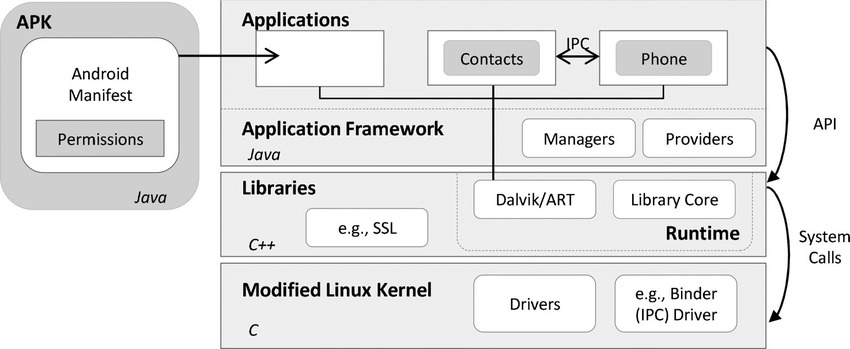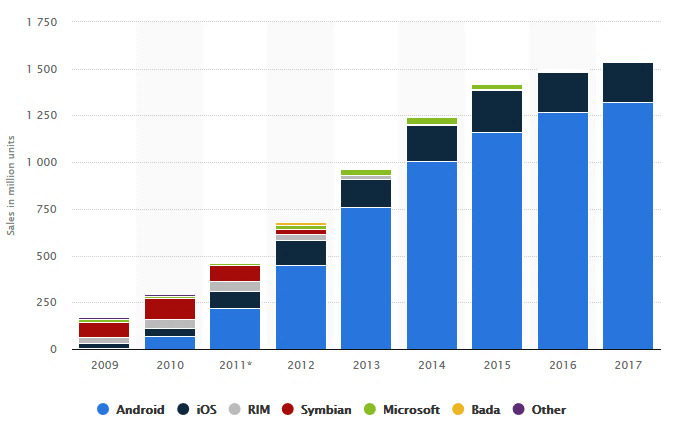
Shortly after Microsoft, Google also released February patches but for Android devices. Two of the patched vulnerabilities specialists estimate as critical. One of which allows for elevating rights on a system remotely without any user interaction. Another vulnerability that has received critical status was found in one of the Qualcomm’s closed source components.
What do those February patches for Android mean?
CVE-2021-39675 is the identifier of vulnerability that received the critical status. Though it only affects the current version of the mobile operating system, Android 12. Although cybersecurity specialists note that this kind of vulnerability is actively exploited in well-orchestrated cyber-espionage campaigns, Google found no evidence of its exploitation in real attacks.
Qualcomm`s CVE-2021-30317 only affects those devices which use this hardware component.
Apart from two critical vulnerabilities specialists also patched five vulnerabilities with high severity in Framework, four in Media Framework, seven in System. In addition, serious problems affected the components of MediaTek, Amlogic and Unisoc.
The company has not yet disclosed the technical details of the vulnerabilities out of security reasons: patches must first reach users’ mobile devices.
Android 13 Developer Preview
And speaking of Android and Google, have you heard that on February 10th Google released the Android 13 Developer Preview for its Pixel phones? You may not but insiders of the industry already started speculating about what we might expect from the user version of Android 13 itself. Although some experts doubt the future “greatness” of the version, some say referring to the Android 12L it can bring quite a promising change. The very few new introductions to user-facing changes brought the said discussions into the heat.
“Android 13 iterates on Android 12, which iterated on Android 11, which iterated on Android 10, and so on and so forth. Development on Android never ends, so every feature that isn’t ready in time for the public release of the next Android version gets pushed back to a future release,” says Mishaal Rahman, senior technical editor at Esper and former editor-in-chief of XDA Developers.
Will the new Android version be a simple iteration of the previous one mostly Android 12L or it really can be something utterly new? The one thing is for sure that Android 13 will most likely receive the same design as Android 12 because Google doesn’t change its material design language every year. The same Mishaal Rahman argues that this cannot be enough to call the new version iterative. He adds that in such a case then one can consider every Android update an iterative. In their own words “the term itself holds little meaning.”
As Rahman says Google usually makes plans which features they want for each version to have in every release. For example, in Android 12 Google made a plan to debut Material You together with most of the UI changes and features associated with it, such as dynamic color.

Jitesh Ubrani, research manager for IDC’s worldwide device tracker agrees that it can be just too early to say anything about the new version and its iteration from the previous ones “as Google has yet to show off the OS in detail.” According to their idea one cannot make a judgment solely on some minor updates. Even if updates are very minor, this doesn’t certainly mean a bad thing and,by the way, Android 12 brought some major changes as well. Specialist explains that Android 13 in its turn would also possibly offer further refinement and hopefully further adoption.
New Android 13 version will focus primarily on developer productivity, security and privacy. The previous one Android 12 had the design that many specialists say many users didn’t like Adam Conway from XDA Developers wrote in an article. They suppose that from what we have seen so far, “very marginal iterative improvement”, the new Android version will certainly be the design iteration of the previous versions.

In October 2021 Google made the release of Android 12L which was intended to be a special version of Android 12 made specifically for large screen devices such as foldable devices and tablets. On this one Android experts say that 12L can be considered the most stable version of 12 which includes a branch of UI for foldables and tablets.
In any case future Android 13 appears to be mostly built from Android 12L. And because it’s an interim release we may expect more from the user version of Android 13. Rahman says that it explains why12L did not have that many new features.
Anshel Sag, a senior analyst at Moor Insights and Strategy, adds that even though the Android 12L version didn`t have many features it was still a desired addition for larger formats. It also makes sense as Android starts to expand deeper into Windows and foldable form factors.
What Android 13 needs to stand out?
Specialists suggest that while Google is doing just right with the ‘hub mode’ and screen saver changes it would be really interesting to see what the company plans to take on iPadOS.
For Ubrani the one change that could significantly boost the success of the new Android version would be the ability for Pixels to stream apps to nearby Chromebooks or PCs. He thinks this feature would help Android to contest with Apple in many ways.
Also the adoption rate should also be improved because it’s still Androids largest downside. Users and vendors should receive the quickest adoption of the latest version. Google has been working on this aspect for years, but this process takes a long time. Possibly further compartmentalizing the OS, making dev previews available sooner or something else that will help the company to progress with the installed base.
A little bit of patience is what you sometimes need
Specialists advise against users installing developer versions of Android 13. Those who want to see things first might find the new OS difficult and glitchy. But it certainly would be no harm if you try it on some spare phone or PC which are capable of running the Android Emulator. But to try it on a user`s daily driver device puts you to some extent at risk.
Ubrani warns that the developer version of Android 13 is still under-baked and doesn’t feature a user-friendly installation nor is it very stable. If a user installs it it will do more harm than something good for an average user.
You also should know that many apps refuse to run or restrict available features on software builds that aren’t compliant with CTS (Compatibility Test Suite).That would be your case if you install the developer version of Android. In addition you won’t receive any updates as app developers or Google won’t prioritize providing support for users running Developer Preview builds.
